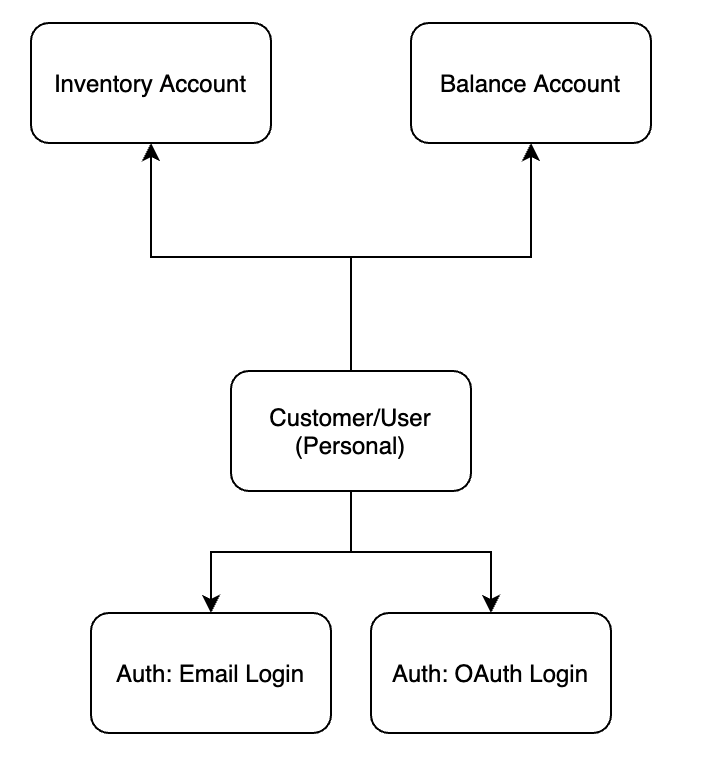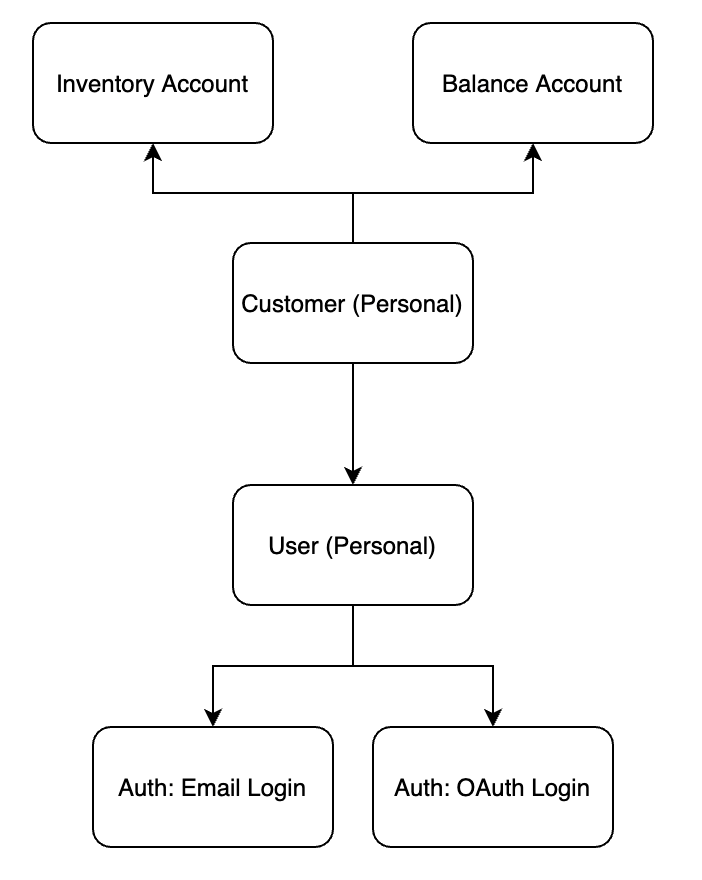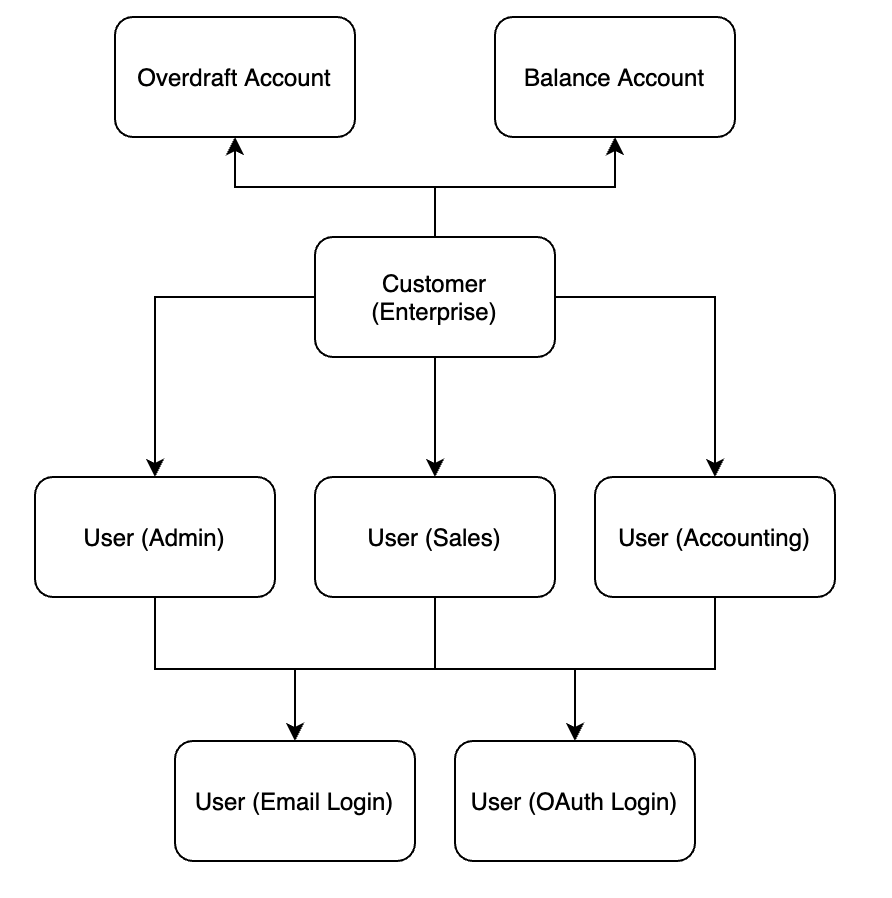User System Design
- Overview
- Naive User System
- Simple User System
- eTOM User System
- Implementation Difficulties
- Conclusions
Overview
Design a user system is probably the most important part of an internet or SaaS application, In the last decade, I have seen wrong designs again and again, which costs a lot when you realize the design flaw later. For example, I used to work with a system running over 8 billion USD, which mixed user and account into one table, and it is almost impossible to separate the monolith code into two services like the user service and account service. Eventually, we have to work around on top of the wrong design, and make the system even more hacky and difficult to maintain. So, I just hope I can write something to share with you, to avoid this happen again in your early design stage.
Naive User System
Let’s start with a very simple application. This application never requires financial accounts or customer identity, this will be a typical user system for personal customers (we will talk about enterprise customers later). Here a customer or user can register via Email or Twitter OAuth2, as the diagram below. Everything looks good enough, right?

The problem here is, we don’t know who they are. This introduces obstacles for anti-fraud. Suppose you have a marketing campaign and only new customers are eligible for some coupons. Without identity information, customers can register from both Twitter and email. To stop that, you need extra algorithms to detect duplicated customers.
Another problem is, this design is often too short-sighted for business growth. At the beginning stage you think your application does not need a clear separation of customer/user/account, but once your application gets evolved with new features, especially financial features, you will run into big troubles.
To provide financial features, you probably need KYC (know your customer) compliance before you can set up any financial accounts for your customers. That means, later you will need identity information like a business license, or SSN from your customer, and only after the customer is identified and verified, you can create financial accounts for them.
Simple User System
Once you have your customer identity verified, before opening accounts for your customers, you may run into a user merging problem. Because two users could be the same customer, you can know that after the user identity verification, maybe you reject to open accounts for the second user, maybe you need some sort of user merging process to be designed and implemented. The latter option is often very painful to do. E.g, if your application is a sales system and one of your customers has registered two users, for domestic and overseas sales. He already has some customers in the two users, now he wants to use some financial features requires accounts, your system needs to guide him to provide migration wizards to merge the two users into one.
Anyway, the new design looks like the diagram below.

eTOM User System
With user identification, merging and account systems, are we done? NO. Actually we need to separate the concepts of customer and user as below.

Why is that? The reason is, as the customer’s business grows, you could hire other people to help and it will you could provide services to more complicated customers - enterprise customers. And you’d better consider such use cases and implement a more generic user system at the early stage.
Enterprise customers are much more complicated than personal customers because an enterprise normally is operated by multiple users, it often requires RBAC and IAM, or more complicated authentication and authorization systems. Now, you are actually implementing the eTOM user system.
eTOM (enhanced Telecom Operations Map) is a framework for enterprise processes in the telecommunications industry. It is a set of standards, models and best practices. It first introduces the separation of the three concepts: Customer/User/Account.
A customer is defined as a legal entity, it can be an enterprise customer or a personal customer. A customer has to be identified or verified. There are different ways to identify a customer. E.g, a personal customer could be verified by his/her driver license or SSN against the state system, while an enterprise customer could be verified by its business license against the state tax system. In some countries, those state public systems are not stable or ready, you probably also need other solutions, maybe manually. But identify verification is extremely important in SaaS, especially when you are working on financial systems, where KYC compliance is mandatory.
In most cases, customers always sign up to create users in your system to log in. Then the customer could create different users for different purposes in your system as in the diagram below. In another word, a user could be the employees of an enterprise, group or employer, and behave/operate for the legal entity.
Below is a typical design for enterprise users, actually most IaaS/PaaS providers follow this pattern when designing their user systems.

Implementation Difficulties
Identity Verification Difficulties
If your system requires identity verification of your customers, it’s actually often very difficult to implement in many cases. E,g. for the personal customer, he/she could sign up several times with different identity information like SSN, passport, driver’s license. Unless you have a cross-verification mechanism you cannot link them, your system will end up with 3 customers, and actually they are from the same person. Most countries or states do not provide such cross-check services or APIs. For small business SaaS applications, it’s better to keep only one method of verification; for large business entities, it’s not a big deal, because the ARAP per customer is worthy for you to manually verify them one by one with different identifications (business registration, phone call etc).
User Merge
As I mentioned before in this article, even you have a simple user system, once you have customer identity verification and you may see two users are actually the same customer, then you need to either merge the two users, or migrate the customer data from one to the other one. This is very difficult to make the process smooth, so sometimes we could just allow only one of them verified.
Authentication Change
If a user signed up with his phone number solely (no Twitter or WeChat OAuth, no email), later he changes his phone number, then he might not be able to log in again because he will never receive the SMS verification code. So we always need to encourage users to use multiple authentication methods and combine the user’s private identification and historical behavior data to design an easier process to change authentication. (e,g. SSN and last log in time)
Another case is if user A has left your application and changed his phone number, two years later the telecom service provider could assign that phone number to another user B. When B tries to sign up he will see “the phone number has already registered”, then when he tries to log in, we cannot just simply let the user login with an SMS verification code. Because that will have user B log in as user A, and see A’s personal data. To avoid this, we need to analyze historical user behavior data and detect such cases (e,g. new device id), then prompt the user to provide more information to verify customer identity. If it’s still user A, let him in. If it’s a new user, we need to design a process to remove the phone number from user A and allow user B to use it to sign up.
Conclusions
Having a carefully designed eTOM-like user system at the very beginning of your business will benefit you the next decade, without it, you could take much more effort to fix it in the future. Hopefully, this article finds you well and helps you avoid mistakes that are made in so many companies.